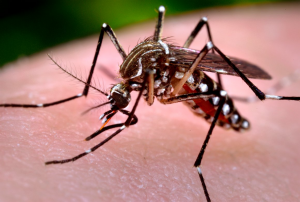4 Things to Know About the Zika Virus and Health IT
 Similar to the Ebola virus outbreak in 2014, healthcare IT will play a critical role in tracking the Zika virus, a mosquito-borne flavivirus that causes flulike symptoms in patients and is particularly concerning for pregnant women.
Similar to the Ebola virus outbreak in 2014, healthcare IT will play a critical role in tracking the Zika virus, a mosquito-borne flavivirus that causes flulike symptoms in patients and is particularly concerning for pregnant women.
The virus is currently spreading in South America, Central America and the Caribbean, and disease surveillance technology is key to protecting against it in the U.S., according to epidemiologist and public health expert Christine Hockett in Healthcare IT News.
We know how the Zika virus is spread, it became a massive outbreak in Brazil in 2015 and is linked to serious birth defects, but as health IT professionals, here are four other things you should know right now about the Zika virus and health IT:
The Zika virus has been around awhile. It was first discovered in the 1940s in Uganda in the Zika Forest, though most people had not heard of it until the massive outbreak in Brazil. It appeared in Brazil for the first time in May 2005. Disease outbreak used to be tracked by epidemiologists using traditional investigative methods, but thanks to health IT, outbreaks can now be tracked electronically, at least partially.
Disease surveillance technology is key to protecting against the Zika virus. Thanks to disease surveillance systems like the Maven Outbreak Management Software from Xerox, local and state health systems can track diseases electronically, enabling analysis of health data from specific diseases. Care givers and health systems can assess and triage confirmed cases, adapt to new emerging diseases and share updates electronically or via its secure Web portal.
Syndromic surveillance is a key component of Meaningful Use. Syndromic surveillance, a major objective of Stage 1, involves using tools and data to detect and characterize unusual activity for further public health investigation. This information, when it’s received quickly, allows local, state and federal public health to detect and respond to outbreaks and health events quickly, and allows it to be analyzed in the long term.
There is no ICD-10 code specifically for the Zika virus. The virus would likely be coded under B33.8 (“Other specified viral diseases”) or A92.8 (“Other specified-mosquito-borne viral fevers”). The U.S. is still under a partial code freeze, which means no changes to the code set can be made until October of this year, though exceptions can be made if the Centers for Disease Control (CDC) consider it a significant enough health concern to create the code before then.
Disease outbreaks change all the time, and the Zika virus is moving fast. Collaboration between hospitals and local and state departments is critical, said Hockett.
For more information and updates, visit the CDC Zika virus page.